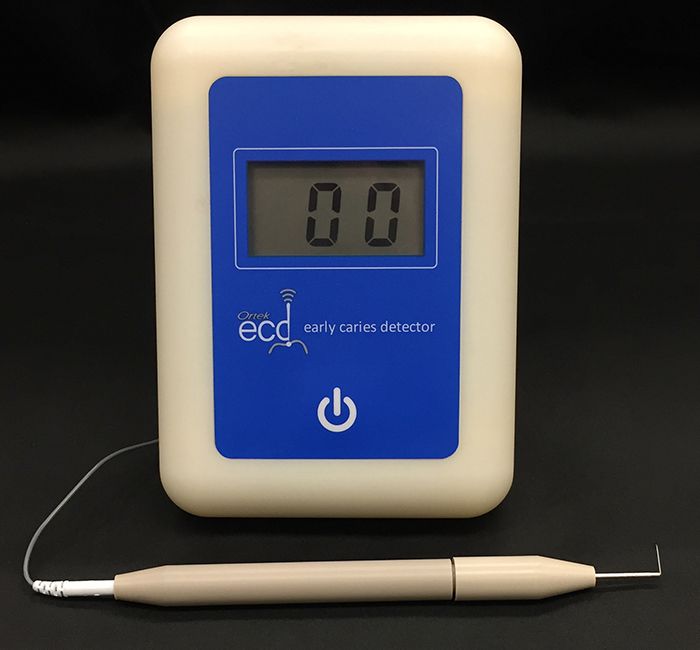
A new device cleared for commercialization this month by the Food and Drug Administration (FDA) can help dentists find clear signs of tooth decay long before dental lesions turn into cavities and without using X-rays.
The Electronic Cavity Detection (ECD) System uses electrical conductance to diagnose and monitor enamel lesions on the biting surfaces of molars and premolars.The device was developed and patented by researchers in the Division of Translational Oral Biology in the Department of Oral Biology and Pathology at Stony Brook University School of Dental Medicine, and licensed to Ortek Therapeutics, Inc.
Mineral loss in tooth enamel is a significant change that leads to the development of cavities. The battery-powered ECD detects this early mineral loss before a cavity forms. In clinical trials conducted through Stony Brook School of Dental Medicine, the ECD was up to 96 percent accurate in detecting microscopic pre-cavity enamel lesions. Lead researcher Israel Kleinberg, DDS, PhD, DSc, believes that the device will emerge as a new paradigm in oral health care and may help dentists diagnose and monitor pre-cavitated lesions in enamel that cannot be detected by X-rays.
Using An Electronic Device to Detect Cavities Early was originally published on the Stony Brook University website.